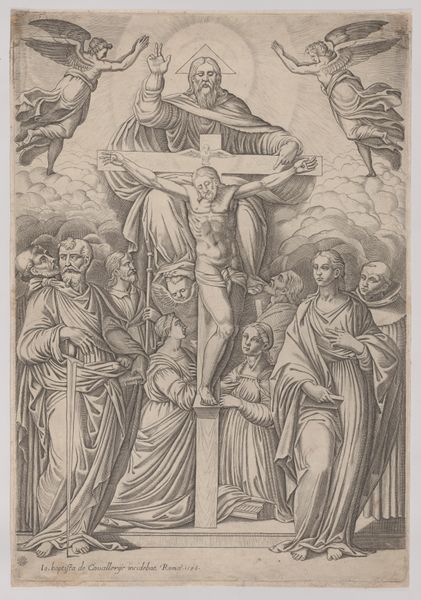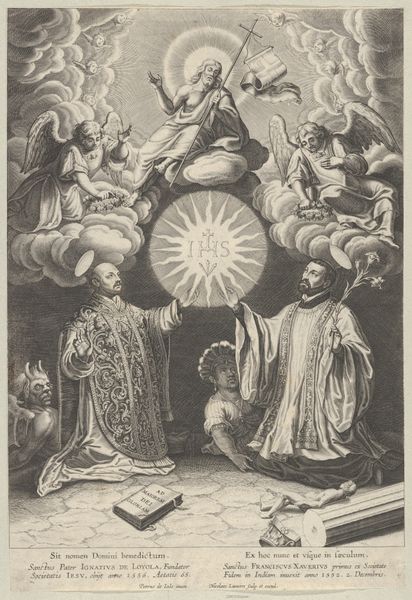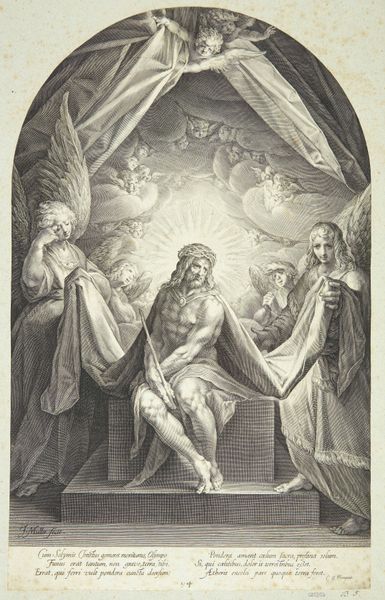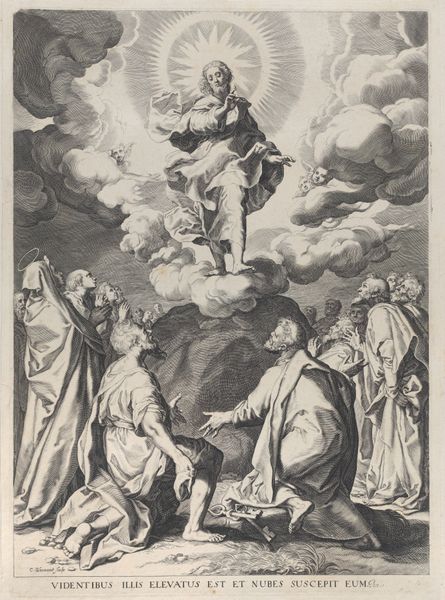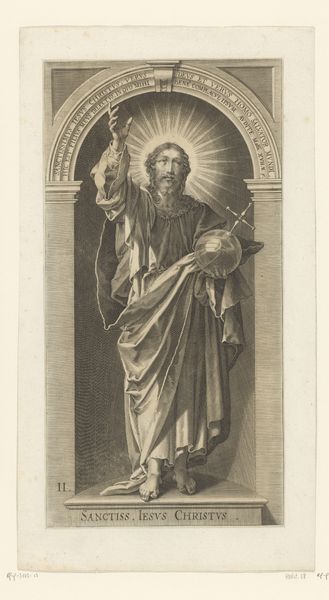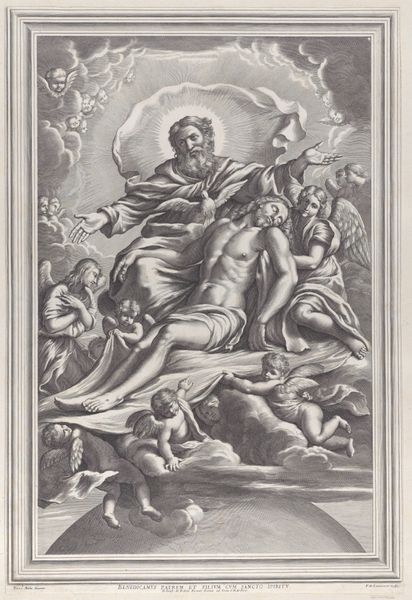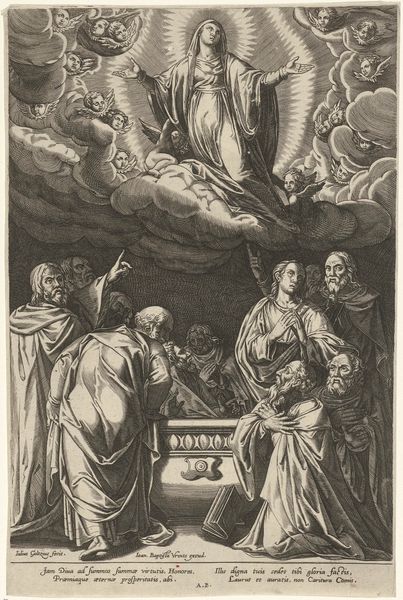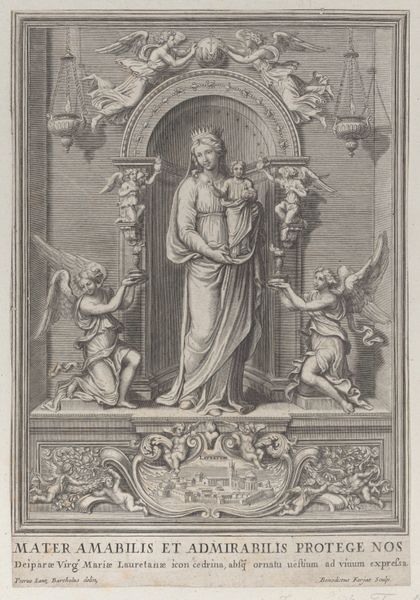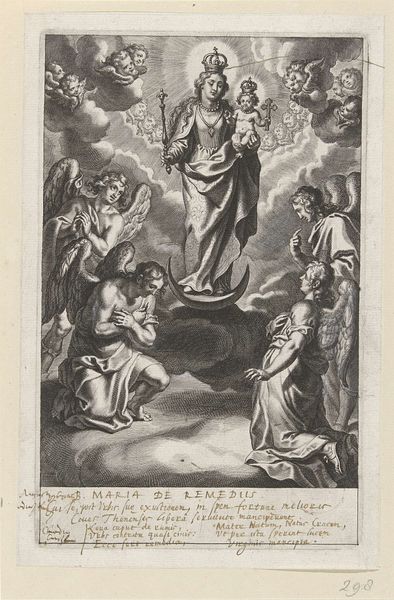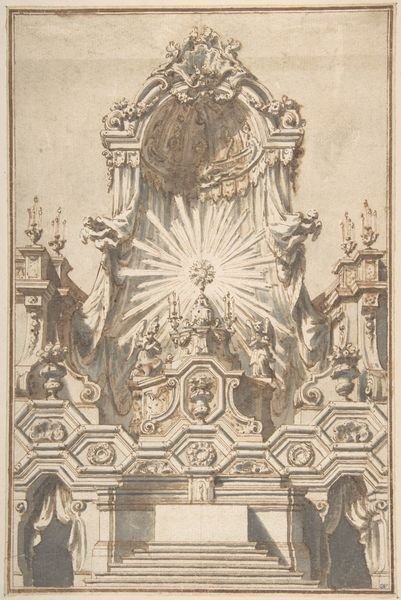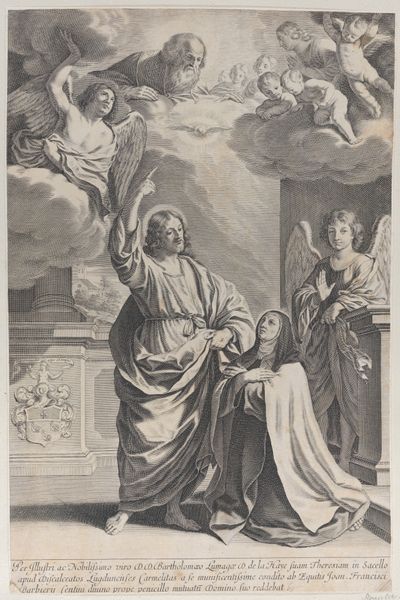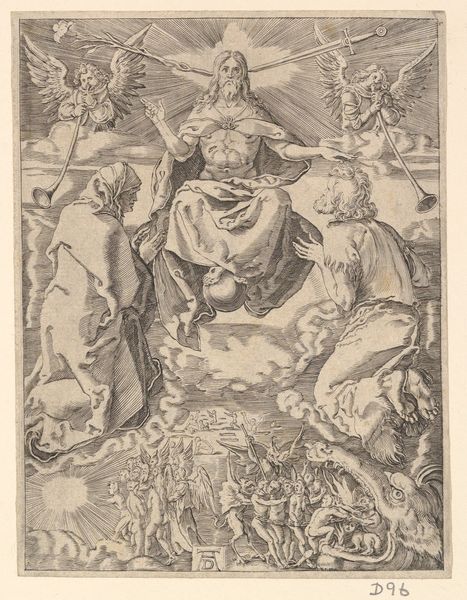
print, engraving
#
portrait
#
baroque
# print
#
history-painting
#
engraving
Dimensions: height 322 mm, width 208 mm
Copyright: Rijks Museum: Open Domain
Curator: What catches my eye first is that incredibly luminous circle radiating behind Christ – it almost feels like you could step right into it. What about you? Editor: The mood it strikes is almost ethereal, no? But also deeply conventional. I can immediately read it as a visual rendering of power and established norms. The image presents "Tronende Christus met twee mannen" created by Cornelis Galle I in 1634. It’s a print housed here at the Rijksmuseum. Curator: Galle I, Cornelis Galle I... Considering it's Baroque era, this placement within a visual vocabulary that sought to dramatize spiritual experience is striking, what do you make of this conscious choice by the artist? Editor: You’re right, Baroque loved drama! And Cornelis brings it. It is as if he were channeling the Council of Trent, making religious themes ever-present but as cultural hegemony. Also, that blank banner – it feels like an invitation. An ideological project, I suppose, if you consider those who promote that message. Curator: Absolutely, that blank banner can be interpreted in many ways, perhaps as space for different doctrines or narratives to inscribe themselves onto this symbolic structure. It really shows how power manifests in visual culture. How it creates hierarchies that perpetuate those power structures. Editor: Which is partly why it might feel old-fashioned now. But then, I appreciate how engraving captures the emotional intensity of Baroque art through intricate lines and contrasting shades. Makes you think about accessibility. It's reproductive. How does its accessibility then, or lack thereof, play into these notions of religious and secular power that you mention? Curator: Indeed, printing had transformative socio-political implications during that era. Editor: When looking at that composition of radiating light I cannot stop pondering its use today... Curator: This work can serve as an entryway for thinking through similar images of dominance today. And to interrogate them. Editor: Well, I never thought a picture of Jesus could make me think so hard about intersectional feminism and the printing press all at once.
Comments
No comments
Be the first to comment and join the conversation on the ultimate creative platform.
